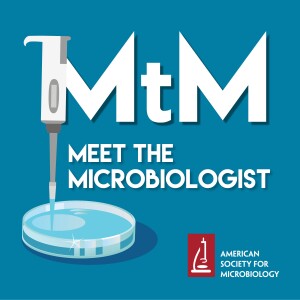
MTS18 - Elizabeth Edwards - Cleaning Up Solvents in Groundwater
 2009-02-25
2009-02-25
Elizabeth Edwards knows that nothing is simple or easy when it comes to cleaning up toxic waste, but Edwards, a professor of Chemical Engineering and Applied Chemistry at the University of Toronto, is looking for ways to harness microbes to do our dirty work for us. Dr. Edward’s research focuses on the biodegradation of chlorinated solvents in the environment – the means by which microbes can actually make a living by eating our noxious waste.
Chlorinated solvents like trichloroethylene (TCE), perchloroethylene (PCE), and others, have a sordid history in the environment. They have long been used as degreasers and dry cleaning fluid, but before there were regulations about how to handle waste, manufacturers and dry cleaners dumped old, dirty solvents in evaporation ponds or out the back door of the facility. Some of the fluid dumped this way evaporated, but since chlorinated solvents are both dense and recalcitrant, much of the liquid seeped straight down to the groundwater. And stayed there. Among other projects, Dr. Edwards is looking at the ability of mixed cultures of bacteria to break down these solvents in a step-wise process, with the expectation that we’ll eventually be able to treat the contamination at some sites with injections of microbes.
In this interview, Dr. Merry Buckley talks with Dr. Edwards about why chlorinated solvents are such a difficult environmental problem, how working in environmental consulting for a time helped her realize where she wanted to focus her research, and why we might have to make some tough decisions when it comes to cleaning up the hundreds (thousands?) of solvent-contaminated sites in North America.
More Episodes
 2010-10-06
2010-10-06
 2010-09-23
2010-09-23
 2010-09-01
2010-09-01
 2010-08-18
2010-08-18
 2010-07-14
2010-07-14
 1
1
 2010-07-01
2010-07-01
 1
1
 2010-05-19
2010-05-19
Create your
podcast in
minutes
- Full-featured podcast site
- Unlimited storage and bandwidth
- Comprehensive podcast stats
- Distribute to Apple Podcasts, Spotify, and more
- Make money with your podcast
It is Free
- Privacy Policy
- Cookie Policy
- Terms of Use
- Consent Preferences
- Copyright © 2015-2024 Podbean.com





